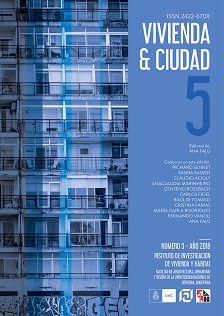The global city: enabilng economic intermediation and bearing its costs
Keywords:
Global, Economics, City, MobilityAbstract
Contesting the widespread notion in the 1980s that place no longer mattered to highly digitized economic sectors turned out to be the first step towards conceptualizing the Global City function. It became an effort to detect a new, somewhat elusive formation deep inside major cities. Then came 8 years of endless data analyses and exciting fieldwork. My basic mode was discovery, not replication. What was the combination of elements that might produce this ironic outcome: the fact that the most powerful, rich, and digitized economic actors needed “central places,” and perhaps more than ever before? Large corporate firms engaged in routinized production could locate anywhere. But if they went global they needed access to a whole new mix of complex specialized services almost impossible to produce in-house as had been the practice. A second hypothesis that was stronger than I expected was that this new economic logic, partial as it was, would generate high-level jobs and low- wage jobs; it would need far fewer middle-range jobs than traditional corporations. But those low-level jobs, whether in the office or in households, would matter more than one might imagine. I described them as the work of maintaining a strategic infrastructure.References
SASSEN, Saskia (1990). The Mobility of Labor and Capital: A Study in International Investment
and Labor Flow. Cambridge, UK: Cambridge University Press.
——— (1999). “Global Financial Centers.” Foreign Affairs. Retrieved from
https://www.foreignaffairs.com/ articles/1999-01-01/global-financial-centers.
——— (2001). The Global City. Princeton, NJ: Princeton University Press.
——— (2005). “Digging in the penumbra of master categories.” The British Journal of Sociology
56(3): 401–3. Retrieved from doi:10.1111/j.1468-4446.2005.00072.x.
——— (2008). Territory, Authority, Rights: From Medieval Authority to Global Assemblages.
PRINCETON, NJ: Princeton University Press.
——— (2012). Cities in a World Economy, 4th edition. London, UK: Sage.
——— (2014). Expulsions. Cambridge, MA: Harvard University Press/Belknap Books.
SASSEN-KOOB, Saskia. (1979). “Formal and Informal Associations: Dominicans and
Colombians in New York.” The International Migration Review 13(2):314–32. Retrieved May 14,
2016, from http://doi.org/10.2307/2545035
——— (1982). “Recomposition and Peripheralization at the Core: Contemporary Marxism.”
Social Jus- tice/Global Options 5:88–100. Retrieved May 14, 2016, from
Downloads
Published
Issue
Section
License
Authors who publish in this journal agree to the following terms:
a. Authors retain copyright and guarantee to the journal the right to be the first publication of the work as well as licensed under a Creative Commons Attribution-ShareAlike 4 license.
b. Authors may separately establish additional agreements for non-exclusive distribution of the version of the work published in the journal (e.g., placing it in an institutional repository or publishing it in a book), with an acknowledgement of its initial publication in this journal.
c. Authors are permitted and encouraged to disseminate their work electronically (e.g., in institutional repositories or on their own website) before and during the submission process, as this may result in productive exchanges, as well as earlier and greater citation of published work (See The Effect of Open Access).
d. 4.0 International Creative Commons Attribution-ShareAlike 4.0 License.










